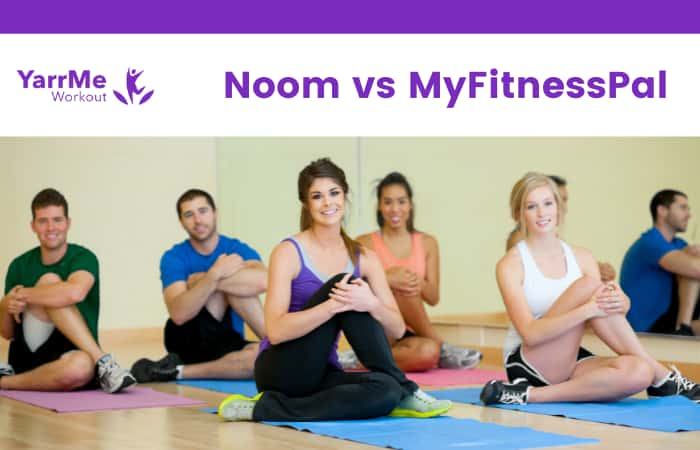Yes! Plyometrics can be a form of cardio. When done at a high intensity, plyometric exercises can raise your heart rate and help you burn calories. However, if you’re looking to primarily improve your cardiovascular health, you may want to consider other forms of cardio such as running or biking. Plyometrics is a great form of exercise for overall fitness and conditioning, but it’s not necessarily the best choice if you’re looking to improve your heart health specifically.
Why Plyometrics Count as Cardio?
Let’s look at some factors due to which plyometrics count as cardio:
The heart rate is increased:
This is the most important factor to consider when determining whether an exercise counts as cardio. When you do plyometrics, your heart rate will go up, meaning that your body is working hard and burning calories. This is what makes plyometrics such a great form of cardio.
improve cardiovascular health:
The overall goal of plyometrics is to improve athletic performance and fitness. Broadly speaking, you can think of cardio as training your heart and lungs to deliver oxygenated blood to your working muscles more efficiently. When you do plyometrics, the various shockwaves that come from these explosive movements will help strengthen the heart muscles and build a bigger and more efficient heart. This will help the heart pump blood throughout the body more effectively, improving cardiovascular health.
burn calories:
Plyometrics is a high-intensity exercise, and as such, it can help you burn calories quickly. When done for an extended period, plyometrics can help you burn hundreds or even thousands of calories. This makes it a great form of cardio for weight loss or maintenance.
overall fitness and conditioning:
Plyometrics is a great form of exercise for overall fitness and conditioning. It can help improve strength, speed, power, agility, and balance. When you add plyometric exercises to your routine, you’ll see a noticeable improvement in all aspects of your fitness.
So, overall plyometrics does count as cardio as all the factors required to make an exercise a form of cardio is fulfilled.
Plyometrics Cardio Exercises List
If you’re looking for a great way to get your cardio workout in, then plyometrics is a perfect choice. There are tons of different exercises that you can do, all of which will help improve your overall fitness and conditioning.
Here are some great examples:
Plyometric Push-ups:
Start in a regular push-up position with your hands shoulder-distance apart. If you need to, you can place a mat or towel under your chest as well. When ready, explosively drive upwards and clap your hands together before returning to the ground. The plyometric action of this exercise helps strengthen the muscles used for jumping and helps develop explosive power in the upper body.
Explore Benefits of Plyometrics…
- Become Taller with Plyometrics – No, you are not going to grow any taller by doing exercises that target your muscles. But , it can assist, checkout how?
- Build Muscles with Plyometrics – Checkout article for plyometrics exercises and benefits of it for building muscles.
- Plyometrics for Long Distance Runners – Plyometric exercises are designed to increase speed, but not for runners who are looking to add distance to their runs. Check it for more information.
- Increase Speed With Plyometrics – Plyometrics is used to improve the speed and agility of an individual. Check out the actual processes and exercises that benefit you greatly.
You can do this exercise for reps or time. If you’re trying to push yourself, try doing 30 seconds of work followed by 30 seconds of rest. You can also do plyometric push-ups on your knees if the regular version is too difficult.

Jump Squats:
Start in a standing position with your feet shoulder-distance apart. When ready, squat down as if you’re going to sit in a chair and then explosively jump upwards, landing back in the starting position. Be sure to keep your core engaged and your weight on your heels throughout the entire exercise.
This is another great plyometric exercise that will help strengthen your legs, core, and upper body. This exercise can also be done for reps or time. If you’re trying to push yourself, try doing 30 seconds of work followed by 30 seconds of rest.
Plyometric lunges:
Start in a standing position with your feet shoulder-distance apart. Step forward with one leg and squat down, keeping the front knee behind the toes. When you reach the bottom of the squat, explosively jump up off of the ground and switch legs in mid-air. Land softly in a squat position with the opposite leg forward.
Single Leg Hops:
Start in a standing position with your feet shoulder-distance apart. When you’re ready, bend your knees and push your hips back as if you’re trying to sit in a chair. Simultaneously lift one leg off of the ground and explosively jump upwards. Land softly with the opposite foot forward and immediately repeat for reps or time (30 seconds of work with 30 seconds of rest is a great goal).
These are just some examples of plyometric cardio exercises. There are tons you can do, all of which will help improve your overall fitness and conditioning. Plyometrics is an excellent way to get in shape and stay in shape!
How much calories do plyometric exercise burn in an hour?
An hour of plyometric exercise can burn anywhere from 100 to 350 calories depending on the intensity, frequency and duration. Generally, more calories are burned with higher intensities of work. Intensity also changes the number of calories burned per minute. The more explosive an exercise is, generally which higher intensity it has, the easier it makes it for you to maintain your current weight because this type of exercise burns more energy than regular aerobic exercises or activities that are performed at a low-intensity.

Browse More on Plyometrics…
- Does Plyometrics Work? – No. Plyometrics are intense exercises that are there to produce power, and we shared some of the reasons why it’s not recommended as a daily workout.
- Is it okay to do Plyometrics Everyday? – No. Plyometrics are intense exercises that are there to produce power, and we shared some of the reasons why it’s not recommended as a daily workout.
- Plyometrics and Cardio are Same? – Yes! Plyometrics can be a form of cardio. They can be considered cardio if done at high intensity. To know more, checkout article.
- Plyometrics makes you bulky!!! – Plyometric training alone won’t assist you to gain muscles. We think it’s the opposite. Check out the article to find out why!!!
- Injuries with Plyometrics – It is possible but rare. These workouts are meant to be done by people who are either fit and healthy. Find out more in article.
Can I do regular squats instead of jumping squats to get the same benefits?
No. Regular squats are not considered plyometric exercises because they do not contain the same explosive movements that jumping squats do, which is an integral part of this type of exercise.
Can I do cardio after plyometrics?
No, no you can’t. These two terms are used to describe completely different exercises, with different goals in mind. Cardio exercises target cardiovascular health and improve stamina for endurance training, while plyometrics is meant to be a weightless exercise that requires you to jump.
Conclusion
Plyometrics is a high-intensity exercise, and as such, it can help you burn calories quickly. When done for an extended period, plyometrics can help you burn hundreds or even thousands of calories. This makes it a great form of cardio for weight loss or maintenance. It’s also very beneficial in improving strength, speed, power, agility, and balance which will lead to improved overall fitness and conditioning.
If all the factors required to make this exercise count as cardio are fulfilled then yes plyometric exercises do count as cardio because they provide benefits that other forms of cardiovascular workouts cannot offer like explosiveness and resistance training with light weights.






